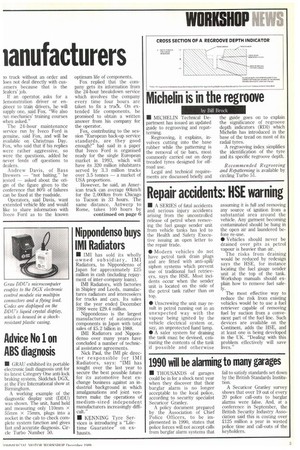Repair accidents: HSE warning
Page 117

If you've noticed an error in this article please click here to report it so we can fix it.
• A SERIES of fatal accidents and serious injury accidents arising from the uncontrolled release of petrol when removing the fuel gauge sender unit from vehicle tanks has led to the Health and Safety Executive issuing an open letter to the repair trade.
• Modern vehicles do not have petrol tank drain plugs and are fitted with anti-spill/ siphon systems which prevent use of traditional fuel retrievers, says the HSE. Most incidents occur when the sender unit is located on the side of the petrol tank rather than on top:
• Unscrewing the unit may result in petrol running out in an unexpected way with the vapour being ignited by the vehicle electrical system or, say, an unprotected hand lamp. • A safer system for draining the tank must be devised, estimating the contents of the tank if possible and otherwise assuming it is full and removing any source of ignition from a substantial area around the vehicle. Any garment becoming contaminated should be hung in the open air and laundered before re-use.
• Vehicles should never be drained over pits as petrol vapour is heavier than air.
The risks from draining would be reduced by redesign says the HSE, for instance locating the fuel gauge sender unit at the top of the tank. Workshop manuals should explain how to remove fuel safely.
The most effective way to reduce the risk from existing vehicles would be to use a fuel retriever capable of removing fuel by suction from a convenient part of the fuel line. Such devices are available on the Continent, adds the HSE, and at least one is being developed in the UK. "Dealing with this problem effectively will save lives."




















































































































































